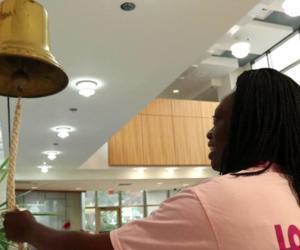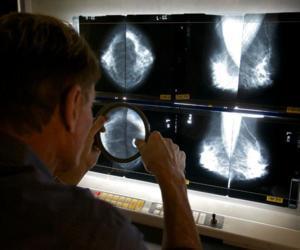Different Approach to Mastectomy Can Provide 'Superior' Results

According to the results from a medical journal of the American Society of Plastic Surgeons, a two-stage process involving pre-shaping breast reduction, alongside risk-reducing mastectomy and reconstruction, is considered a safer approach with superior cosmetic outcomes.
Mastectomy refers to a surgical procedure that involves removing the entire breast or part of the breast tissue from a breast. It is typically used as a method of treating or preventing breast cancer. The different types of surgery for breast cancer include the following:
- Total mastectomy – removing the entire breast (breast tissue and nipple);
- Modified radical mastectomy – removing the entire breast and most of the underarm lymph nodes;
- Double mastectomy – removing both breasts (breast tissue and nipples);
- Lumpectomy – removing the tumor from the breast and any abnormal tissue in the surrounding area
It can be rather difficult to decide between undergoing mastectomy or lumpectomy. Both surgical procedures are effective in preventing the recurrence of breast cancer; however, lumpectomy is not an option for every individual with breast cancer (depending on other present health conditions). Breast cancer surgery may be done for several reasons such as to remove the cancer as much as possible, to find out whether it has spread to the lymph nodes, to relieve breast cancer symptoms, or to re-establish the breast’s shape after the cancer has been removed. Yet, undergoing a specific type of surgery depends on several factors such as size of the breast, size of the tumor, stage of the cancer, age, and overall health. Women who are at high risk of breast cancer typically undergo mastectomy and many even undergo breast reconstruction to restore the breast following mastectomy.
New research
A study was conducted by researchers from Telemark Hospital in Skien, Norway to determine whether targeted pre-shaping is considered a successful preparation approach to mastectomy and reconstruction. The study was led by Gudjon L. Gunnarsson, MD, who alongside fellow colleagues developed a two-stage approach to a specific group of patients – 22 women. In the first stage, all 22 women underwent breast reduction to create a breast shape optimal for breast reconstruction. In addition to re-shaping the breast, the nipple and surrounding tissues were repositioned to a more central location. After 3-9 months following the healing process, the women underwent risk-reducing mastectomy and breast reconstruction. 2 patients experienced complications (hematoma and fat necrosis) requiring additional surgery and 5 patients experienced minor complications that were resolved with nonsurgical treatment. All patients underwent follow-up at 3 weeks, 24 weeks, and 48 weeks. In all cases, the outcomes following cosmetic outlook were measured to be tremendous. “We planned the procedures 3 months apart to allow the scarring and hyperemia to subside. However, most patients wanted to wait a little longer for completion of their nipple-sparing mastectomy/direct-to-implant reconstruction, which explains the calculated median time of 4 months between procedures. Patients requesting a prophylactic mastectomy are generally healthy and provide optimal conditions for observing the results of an operative method in terms of safety and an outcome unbiased by the effects of cancer therapy,” noted Dr. Gunnarsson and his fellow colleagues.
The researchers also expressed the importance of proper selection of patients and the challenging nature of such surgeries. “We have attempted various approaches to solve this challenging task in the past, and most attempts have led to tedious secondary corrective procedures. The current method has improved our results, resulting in fewer complications and better aesthetics and has been integrated into our standard of care based on the results of this series” they stressed.
Dr. Gunnarsson and fellow colleagues strongly trust that the two-stage approach could prove to play a valuable role in improving the outcomes relating to risk-reducing mastectomy and reconstruction in women with large breasts. What’s more, the procedures can be successfully performed between duration of 3-4 months in between one another. The researchers wrote that such women “more often end up having a difficult corrective procedure and unacceptably high rate of failed reconstruction.” Moreover, they added “the superior cosmetic outcome and low complication rate have proved to be better than we had anticipated.” Based on their results, the two-stage approach can be adopted as a standard of care in patients with breast cancer.
What is risk-reducing mastectomy?
Risk-reducing mastectomy (RRM), also known as bilateral prophylactic mastectomy, involves removing healthy tissue for both breasts as much as possible. It is a possible option for women who are at high risk of developing breast cancer or those who already have breast cancer. High-risk women include women with BRCA1 or BRCA2 genes, those who have undergone radiation therapy for a prolonged period of time, and those with a strong family history of breast cancer. Risk-reducing mastectomy does not entirely exclude the risk of breast cancer in the long run, although it does significantly reduce it (up to 90%).
What to consider
Before considering undergoing risk-reducing mastectomy, it is important to refer to genetic counseling. A genetic counselor will help you to weigh the pros and cons associated with the procedure, such as expected risk reduction of breast cancer, the risk of diagnostic tests (such as mammography), and the impact of the procedure on the body. If you are considering risk-reducing mastectomy, you should consider talking with experienced surgeons about the procedure itself, possible side effects, and breast reconstruction. They can inform you what you should know about body image after reconstruction surgery, as well as how to manage your risk of breast cancer. Moreover, consider contacting support groups where you can communicate with other women who have already gone through the procedure. Keep in mind that risk-reducing mastectomy is not suitable for every individual. For instance, if you have a heart condition or another present health condition, you might be at greater risk of experiencing complications. What’s more, if you do not wish to undergo risk-reducing mastectomy but you are at high risk of breast cancer, undergoing regular screening may increase your chances of detecting breast cancer at an early stage so that you have a better chance of successful treatment and full recovery.
In any case, further research needs to be conducted in order to assess the risks and decision-making among women at high breast cancer risk. There are also several options currently available such as breast cancer screening, digital mammography, and chemoprevention. However, specific factors need to be taken into consideration such as your family history, age, as well as overall well-being. Studies examining the influence of healthcare professionals indicate that they play a crucial role in the RRM decision-making process. When asked whether they believe RRM is a suitable approach to diagnosing women with BRCA1 and BRCA2 genes, a large number revealed that they would recommend RRM to the same population, following genetic counseling and risk assessment evaluation. Outcome results from women who have undergone RRM specify that there is a reduced risk of breast cancer following the elimination of ample breast tissue. What’s more, data suggests that RRM can also reduce the risk for women with BRCA1 and BRCA2 genes.
Final thoughts
Due to the physical and psychological effects of risk-reducing mastectomy and breast reconstruction, it is important to speak with your breast cancer team about whether this procedure is right for you. The decision is yours to make but having support along the way can benefit you greatly.
References
https://medicalxpress.com/news/2017-08-two-stage-approach-risk-reducing-mastectomy-results.html
https://www.mdlinx.com/oncology/article/1082
https://www.cancer.org/cancer/breast-cancer/treatment/surgery-for-breast-cancer.html
https://www.nice.org.uk/guidance/cg164/ifp/chapter/surgery-to-reduce-the-risk-of-breast-cancer
http://www.mayoclinic.org/tests-procedures/mastectomy/basics/definition/prc-20012749
https://medlineplus.gov/mastectomy.html














